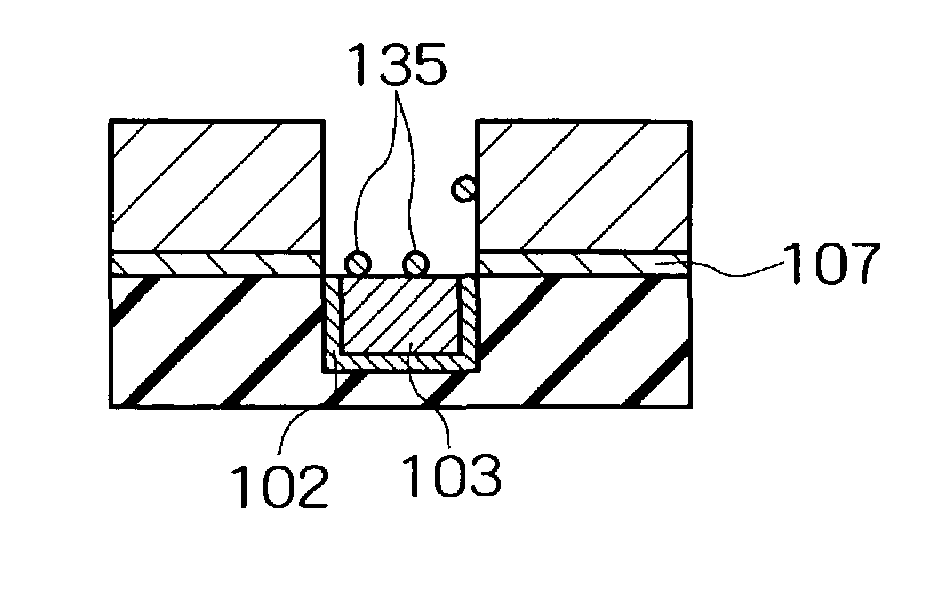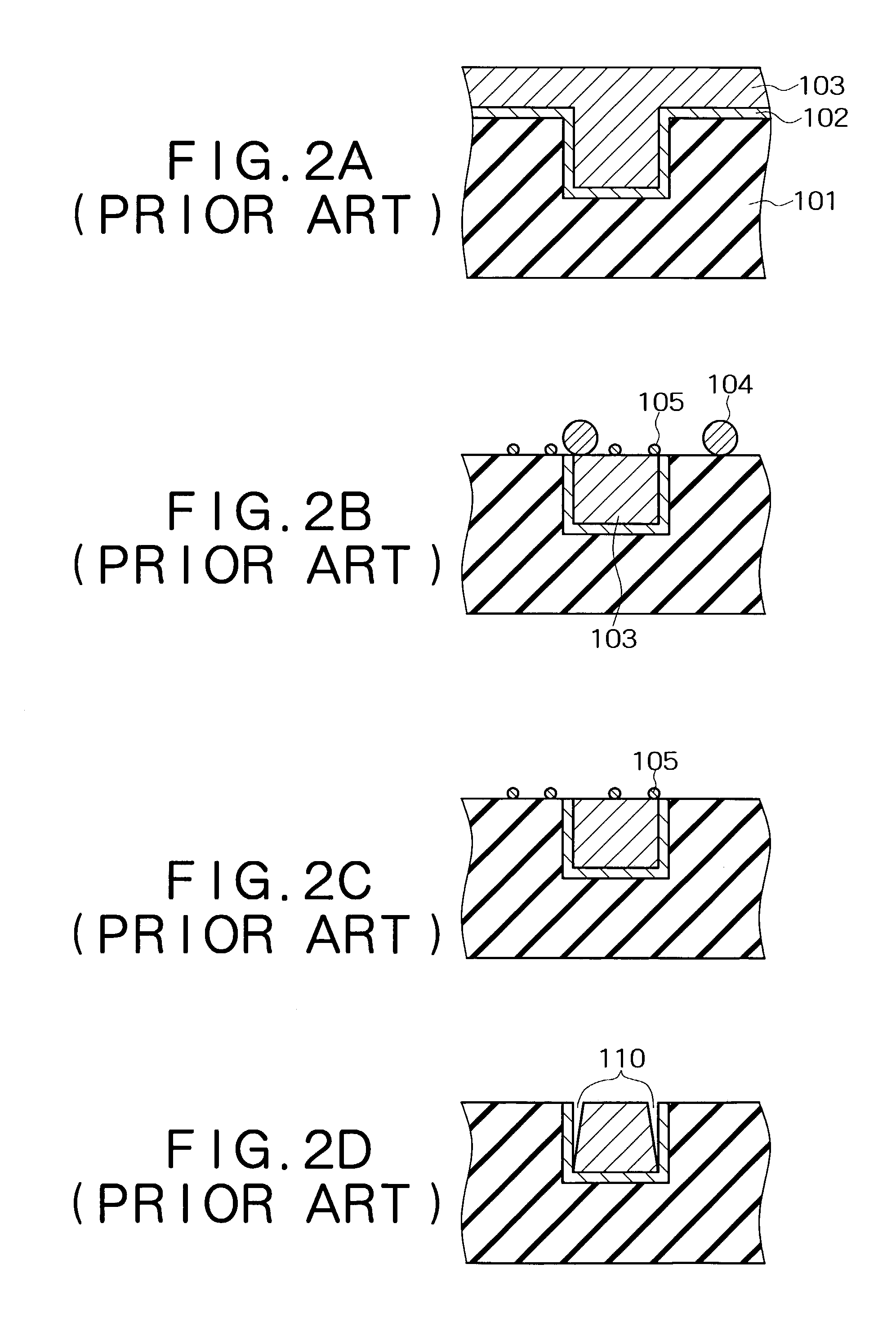Cleaning method, method for fabricating semiconductor device and cleaning solution
a cleaning method and semiconductor technology, applied in the field of cleaning techniques, can solve the problems of affecting the cleaning effect, and affecting the cleaning effect, and achieve the effect of efficient removal of metal contamination
- Summary
- Abstract
- Description
- Claims
- Application Information
AI Technical Summary
Benefits of technology
Problems solved by technology
Method used
Image
Examples
example 1
[0106]The process described with reference to FIGS. 9A to 9D was actually implemented so as to measure the cleaning performance of cleaning solutions. As cleaning solutions, the following four cleaning solutions were prepared to confirm the cleaning performance of each of the cleaning solutions.[0107]Cleaning solution 1: an aqueous solution of oxalic acid at 0.1 percent by mass;[0108]Cleaning solution 2: an aqueous solution of oxalic acid at 0.1 percent by mass in which 1 ppm of a hydrogen gas is dissolved;[0109]Cleaning solution 3: an aqueous solution containing oxalic acid at 0.1 percent by mass and EDTA at 0.1 percent by mass in which 1 ppm of a hydrogen gas is dissolved; and[0110]Cleaning solution 4: an aqueous solution of HCl at pH 5.
[0111]An oxidation-reduction potential of the cleaning solution 1 was about 380 mV, and that of the cleaning solution 2 was about −200 mV. The cleaning solution 1 had a pH value of about 2.0, and the cleaning solution 2 had a pH value of about 2.2....
example 2
[0119]After formation of the copper film on the silicon substrate, a cleaning treatment was conducted with predetermined cleaning solutions. Thereafter, the roughness on the surface of the copper film was measured.
[0120]As cleaning solutions, the following three cleaning solutions were used.[0121](a) oxalic acid (0.03 percent by mass);[0122](b) oxalic acid (0.03 percent by mass)+hydrogen (1 ppm); and[0123](c) oxalic acid (0.03 percent by mass)+a reducing agent (0.1 percent by mass).
where the reducing agent is sodium dithionite.
[0124]The oxidation-reduction potential of the cleaning solution (a) was about 380 mV, the oxidation-reduction potential of the cleaning solution (b) was about −200 mV, and the oxidation-reduction potential of the cleaning solution (c) was about 50 mV. The measurement of the oxidation-reduction potential was implemented under the same conditions as those in Example 1. The cleaning solution (a) had a pH value of about 2.5, the cleaning solution (b) had a pH val...
PUM
 Login to View More
Login to View More Abstract
Description
Claims
Application Information
 Login to View More
Login to View More - R&D
- Intellectual Property
- Life Sciences
- Materials
- Tech Scout
- Unparalleled Data Quality
- Higher Quality Content
- 60% Fewer Hallucinations
Browse by: Latest US Patents, China's latest patents, Technical Efficacy Thesaurus, Application Domain, Technology Topic, Popular Technical Reports.
© 2025 PatSnap. All rights reserved.Legal|Privacy policy|Modern Slavery Act Transparency Statement|Sitemap|About US| Contact US: help@patsnap.com



